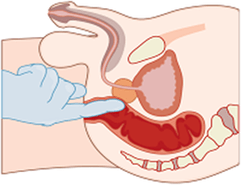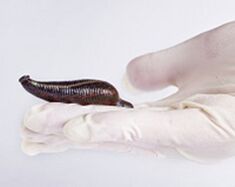Prostatitis is a common and dangerous disease associated with the inflammatory process of the prostate gland. Most often, the disease develops as a result of impaired blood circulation or infection. According to medical statistics, prostatitis has been increasingly diagnosed among able-bodied men in recent years. The disease is accompanied by painful feelings during dehydration and ejaculation. Manifestations of the disease negatively affect a person’s quality of life. Dangerous due to the consequences of prostatitis. In the absence of timely treatment, the disease acquires a chronic course that is difficult to treat. Prostatitis requires complex treatment. Consider effective treatment of prostatitis.
Basic therapeutic methods

If unpleasant symptoms of the disease occur, the person should consult a doctor immediately to diagnose the disease in a timely manner. Based on the results of the test, your doctor will prescribe treatment.
In this case, your doctor will consider the following factors:
- the extent and form of the disease;
- the presence of complications;
- the duration of the disease;
- custom features.
It should not be forgotten that only complex treatment can help overcome prostatitis. Therefore, it is important to strictly follow all of your doctor’s prescriptions and recommendations.
The goal of prostatitis therapy is to relieve inflammation of the prostate gland.
All therapeutic methods used to combat the disease are divided into conservative and operative methods.
Conservative methods include:
- drug therapy;
- vitamin complexes and devices for normalizing the immune system;
- physiotherapy;
- physiotherapy exercises;
- massage;
- Medical treatment;
- hirudotherapy;
- mud therapy;
- traditional treatment methods.
Surgical methods are prescribed in advanced situations where the glandular scar tissue forms and is unable to perform its daily functions. During surgery, the affected tissue is usually removed.
Drug therapy
The method of treating prostatitis consists of taking antibiotics, alpha-blockers, painkillers, and other medications. Consider additional effective, modern tools for treating prostatitis.
Antibiotic therapy
Prostatitis is often bacterial in nature. Therefore, your doctor will prescribe antibacterial medications for your treatment. This class of drugs provides effective treatment for acute and chronic prostatitis. The pharmaceutical industry offers a wide range of antibacterial drugs to combat the disease.
As a general rule, your doctor will prescribe the following groups of antibiotics for treatment:
- Fluoroquinolones.
- Aminoglycosides.
- Tetracyclines.
- Cephalosporins.
- Penicillins.
- Macrolides.
Intravenous antibiotics (Generation III cephalosporins or fluoroquinolones) are prescribed to treat acute prostatitis. When the fever subsides, further treatment is continued with oral antibacterial agents. The average duration of admission is 6 weeks.
Fluoroquinolones are commonly used in chronic prostatitis. These drugs easily penetrate the prostate and are effective against most gram-negative bacteria, chlamydia, ureaplasma. Tetracyclines are effective in suspected chlamydial infection.
Sulfate-containing drugs are prescribed to treat abscesses and chronic prostatitis caused by Proteus infection or Pseudomonas aeruginosa.
Tablets and macrolide injections are prescribed to treat deeply penetrating viruses. If the inflammation of the prostate is due to the penetration of several pathogens, or the tests did not help to determine the type of pathogen, drugs belonging to the aminoglycoside group are prescribed. However, due to the large list of side effects, these drugs are not often prescribed.
If you use antibiotics for a long time, you should support your body with ascorbic acid and folic acid, as well as B vitamins.
It is important to note that in order to achieve effective results and prevent relapses, the entire course of antibiotic therapy must be completed.
Before prescribing an antibiotic, your doctor will determine the cause of the disease. Antibacterial drugs are only effective against bacterial prostatitis. If the disease is due to a circulatory disorder, antibiotic therapy can harm the patient.
Alpha blockers
These drugs are prescribed to relieve tension in the bladder and urinary tract muscles in chronic prostatitis.
Treatment with these agents leads to a reduction in swelling and analgesia.
Non-steroidal anti-inflammatory drugs
These drugs are effectively prescribed to treat the acute form of the disease. They relieve pain and inflammation, trigger a reduction in swelling, and improve secretion release.
The drugs are prescribed in the form of tablets, powders or rectal suppositories.
Angioprotectors
The drugs improve the function of the capillaries of the prostate, blood circulation and oxygen supply to the affected organs, and eliminate stagnant processes.
5-alpha reductase inhibitors
An effective representative of this class of drugs is a drug that reduces prostate volume, relieves tissue swelling, reduces pain, and restores urine flow rate.
Immunomodulatory drugs
To normalize immunity, your doctor will usually prescribe immunomodulatory medications.
Drugs for the treatment of secondary immunodeficiency diseases may also be prescribed.
Hormone therapy
In some situations, the inflammatory process is accompanied by erectile dysfunction. The doctor prescribes hormone therapy to restore the function of the organs of the endocrine system as well as to restore an erection.
Use of cones
Rectal suppositories are effective in the treatment of acute and chronic prostatitis.
List of common treatments:
- Ichthyol candles. They have an antiseptic effect, normalize blood circulation, relieve pain.
- Suppositories with prostate extract. They relieve inflammation and edema, relieve congestion and prevent blood clots.
- Candles with belladonna. Relieves pain and inflammation.
- Suppositories for cell regeneration. The use of such suppositories quickly restores prostate function.
Physiotherapy procedures
Physiotherapy treatments have also proven successful. Physiotherapy consists of various techniques that have recently been successfully used to combat the disease. The doctor individually selects the type of procedure. The process of treatment has a positive effect not only on the prostate but also on the whole body.
Physiotherapy procedures for prostatitis can achieve the following results:
- improves microcirculation in prostate tissues;
- increases the accumulation of medicinal substances in the gland;
- reduce painful feelings;
- improves the quality of urination;
- remove the inflammatory process;
- increases efficiency.
There are several methods of physiotherapy:
- Electrophoresis. The affected area is exposed to DCs with drugs.
- Ultrasound. It is considered to be one of the most effective therapeutic methods. The gland is affected by ultrasound waves. The procedure is completely painless.
- Magnetotherapy.
- Magnetic laser induction therapy. The prostate is treated in a complex way with a magnet and a laser. The procedure improves blood circulation, speeds up the healing process of the affected tissues and relieves pain.
- Laser therapy.
- Microwave microwave therapy.
- Ozone therapy.
- Vacuum therapy.
- Cryodestruction. The affected tissue is removed with liquid nitrogen.
And it is also used to treat prostatitis:
- balloon dilatation. The urinary tract is mechanically dilated by means of a catheter with an inflatable balloon at the end;
- stenting. The procedure also continues with dilation of the urethra. In this situation, however, a stent is inserted. The latter is presented in the form of a cylindrical frame and is made of a polymeric material.
Physiotherapy methods are usually prescribed in conjunction with drug therapy to improve treatment outcomes. Such procedures are well tolerated and have no side effects. Side effects can occur with individual intolerance.
Magnetotherapy
A magnetic field is applied to the prostate through the skin. At the same time, the nutrition of prostate cells is improved, its protective properties are activated, and the removal of toxins from the tissues of the gland is accelerated. Magnetotherapy activates blood circulation and improves the absorption of drugs.

Microwave microwave therapy
The affected prostate is directly exposed to microwave electric waves. As a result, the temperature rises in the heated area, the blood vessels dilate and blood flow speeds up.
In addition, the increase in temperature reduces the spasm of smooth muscle. As a result, the man improved the drainage of prostate secretions and pain relief.
Laser therapy
In the procedure, prostate tissue is irradiated with a low-intensity laser beam. This method thins the blood, speeds up the outflow of secretions and prevents the formation of microthrombi.
Laser treatment enhances the body’s defense functions and promotes tissue regeneration. Laser therapy is prescribed to treat chronic prostatitis.
Vacuum therapy
A special medical device is placed on the penis, under the influence of which blood flows into the penis and an erection occurs. We recommend a combination of vacuum therapy and laser therapy. During an erection, a laser beam is directed at the penis. The latter helps to increase blood flow.
Ozone therapy
For the treatment, a special ozone-enriched fluid is injected through the urethra. Saline is usually used for the procedure. Ozone therapy restores the normal functioning of the prostate, has a bactericidal effect, promotes the recovery of damaged cells, and is one of the modern methods of treating prostatitis.
For the procedure to be effective, it must be done every day. The duration of the therapeutic course depends on the stage of development of the disease and 6-10 manipulations.
Home treatment
Physiotherapy procedures are usually performed in an inpatient setting. However, there are tools that allow the treatment to be performed at home. One such device is one whose benefits include durability and ease of use. With the help of the device, the tissue of the gland is exposed to a magnetic field, and heat and massage are performed.
The procedure takes about 10-12 minutes and is completely painless. For treatment, the condom-tipped tip of the device is inserted into the rectum. After the procedure, the tip is wiped with alcohol. The duration of therapy is 15 sessions.
The device is contraindicated in the following cases:
- in the acute stage of the disease;
- intestinal bleeding;
- in the presence of stones in the prostate;
- in case of rectal cracks and worsening of hemorrhoids;
- men with urogenital tuberculosis;
- with malignant tumors;
- diarrhea;
- in a feverish state.
Before starting physiotherapy, the person should be examined to determine the level of PSA in the blood and undergo transrectal ultrasound of the prostate. Such diagnostics make it possible to rule out oncology. If necessary, your doctor may order an MRI (magnetic resonance imaging).
Physiotherapy methods are not prescribed for the treatment of calculous prostatitis in the presence of calcifications.
Massage
The procedure eliminates stagnant processes in the prostate and promotes the removal of toxins formed as a result of inflammatory processes.
Contraindications to massage:
- the acute phase of the disease;
- adenoma;
- malignancies;
- prostatolithiasis - the presence of tartar in the prostate;
- tuberculosis.

The massage is performed by a doctor. The patient uses the knee-elbow position to maximize pelvic muscle relaxation. The doctor pulls his finger into the anus and massages the prostate. The course usually consists of 10 massages.
This procedure promotes secretion from the gland, activates blood circulation, increases resistance to infections, and accelerates the recovery of damaged tissues.
Recently, prostate massage has rarely been prescribed as medicine advances and new, more effective treatments have been developed.
Physiotherapy
Quite often, prostatitis is caused by an inadequate blood supply to the glandular muscles.
Deep squats are considered effective to normalize blood microcirculation. You have to squat with your arms raised. You should perform this exercise at least 100 times, 3 sets per week.
The following exercises are also effective:
- Scissors sitting. Perform the exercise 20 times with both feet.
- Raise your straight legs while lying on your stomach. Repeat 20 times.
- Lie on your back and bend your knees and place your knees with your knees on your face. Wrap your arms around your legs and lie there for 20 minutes.
- In the morning, massage the perineum for about 5 minutes.
The above exercises along with squatting will help to cure the disease for free.
Medical treatment

Patients are referred to the sanatorium in case of prolonged remission. There are sanatoriums all over the world that treat prostatitis, improve erectile dysfunction and improve health.
The following procedures are usually prescribed for treatment:
- drinking mineral waters;
- physiotherapy exercises;
- various physiotherapy methods;
- hirudotherapy;
- mud therapy;
- balneotherapy.
Clean air, a calm atmosphere and a warm climate have a positive effect on the condition of the prostate gland.
Surgery
The main indications for the surgical procedure are:
- prostate sclerosis;
- bladder neck sclerosis;
- gland tartar;
- tuberculous sclerosis.
The main surgical methods used to combat prostatitis are shown in the table.
| Method name | Short description |
| Transurethral resection | The surgery is done with a resectoscope, so the risk of complications with this procedure is minimal. During surgery, the surgeon removes some or all of the prostate tissue to relieve urethral pressure. It allows you to get rid of unpleasant manifestations of the disease - pain and nocturia. |
| Adenectomy (prostatectomy) | Open abdominal surgery, in which the prostate gland is removed by surgical means. It is characterized by a longer rehabilitation period. |
Surgeries are performed under general anesthesia.
Traditional methods
Folk methods used to treat the disease may improve the metabolic processes of the prostate gland.
Healing decoctions, infusions and tinctures are made from various herbs. And we can add herbs to the baths.
The following recipes are considered the most effective:
- Decoction of the roots of licorice. To prepare 20 g of raw material, mix with 200 ml of boiling water. Boil the mixture for about 20 minutes. Eat 1 tbsp. spoon. 4 times a day. The duration of treatment is 10 days. It is effective in aggravating the disease.
- Infusion of red root. Prepare the infusion in a thermos. To prepare, pour 25 g of raw material with 1 liter of water. The mixture is infused for one hour. Drink 100 ml of hot drink instead of tea. Take the product before meals. The number of daily meetings is three times.
- Decoction of marshmallow roots. Dilute with 2 tablespoons. tablespoons chopped root in a glass of boiling water. Boil for half an hour. Drink 50 ml of the drug, the number of daily doses - 3 times. The duration of treatment is 15 days.
- Honey. Contraindicated in patients with diabetes mellitus and honey allergy. You will need about 10 kg of natural flowers or linden honey. It is recommended to add 100-200 g of honey to the tea every day instead of sugar. After a while the dehydration returns to normal, the pain disappears. After healing, honey is recommended for prevention.
- Honey with celandine. 100 g of dried herbs are mixed with 0. 7 ml of boiling water. Cook the mixture for about 15 minutes. Then allow the broth to cool slightly and strain. Add 500 ml of honey to the drink. Store the product in a glass container in the refrigerator. Drink 1 tbsp. spoon 3 times a day. Take the medicine before meals. It is forbidden to drink alcoholic beverages or take any medicine during treatment with celandine with honey. You should consume 200 ml of oat broth three times a day in the complex.
- Pumpkin seeds. They contain zinc, which is very necessary for all people. It is recommended to eat 30 seeds daily before meals. And the raw seeds are also crushed in a meat grinder and mixed with 0, 2 liters of honey. Mix the mixture well and form small balls. The latter is kept in the refrigerator. Consume 1 ball 1-2 times a day, half an hour before a meal. The ball should be chewed for a few minutes and not swallowed whole.
- Infusion of hazelnuts. Bark or leaves are taken. 1 tablespoon. l. cook the ingredients in 0, 2 liters of boiling water. Cover the container with a lid and allow to boil for 30 minutes. Then filter the drink and drink 50 ml four times a day.
The above methods help to achieve long-term remission or complete recovery of the disease. The key is to follow the recommendations and dosage.
What other methods are used to treat prostatitis?
The following non-traditional methods are also used effectively to treat prostatitis:
- Stem cell injection. The latter, penetrating the affected area of the gland, intensively divide and replace the damaged cells. This method is prescribed for chronic prostatitis.
- Acupuncture. Therapy is performed by activating special points. As a result, blood circulation improves.
- Hirudotherapy. The method uses leeches. Hirudotherapy eliminates swelling of the gland and improves blood circulation.
- Chinese plaster. It activates blood circulation, relieves inflammation, increases libido, restores erections and prevents prostate enlargement.
- Japanese drugs. They alleviate the unpleasant manifestations of the disease and prevent possible complications.
In addition to the positive feedback on the forums, phytotherapy and homeopathy are also leaving.
The most common herbal preparations are:
- preparations based on American Sabal palm extract. The funds are characterized by anti-edematous and anti-inflammatory effects;
- preparations with African plum extract. The devices inhibit sclerotic and cicatricial changes in the gland.
Prostatitis is considered a dangerous disease. Lack of timely therapy can have irreversible consequences. Based on the results of the diagnosis, the doctor chooses a cost-effective, individually effective treatment regimen. Complex therapy allows the disease to be overcome quickly.



























